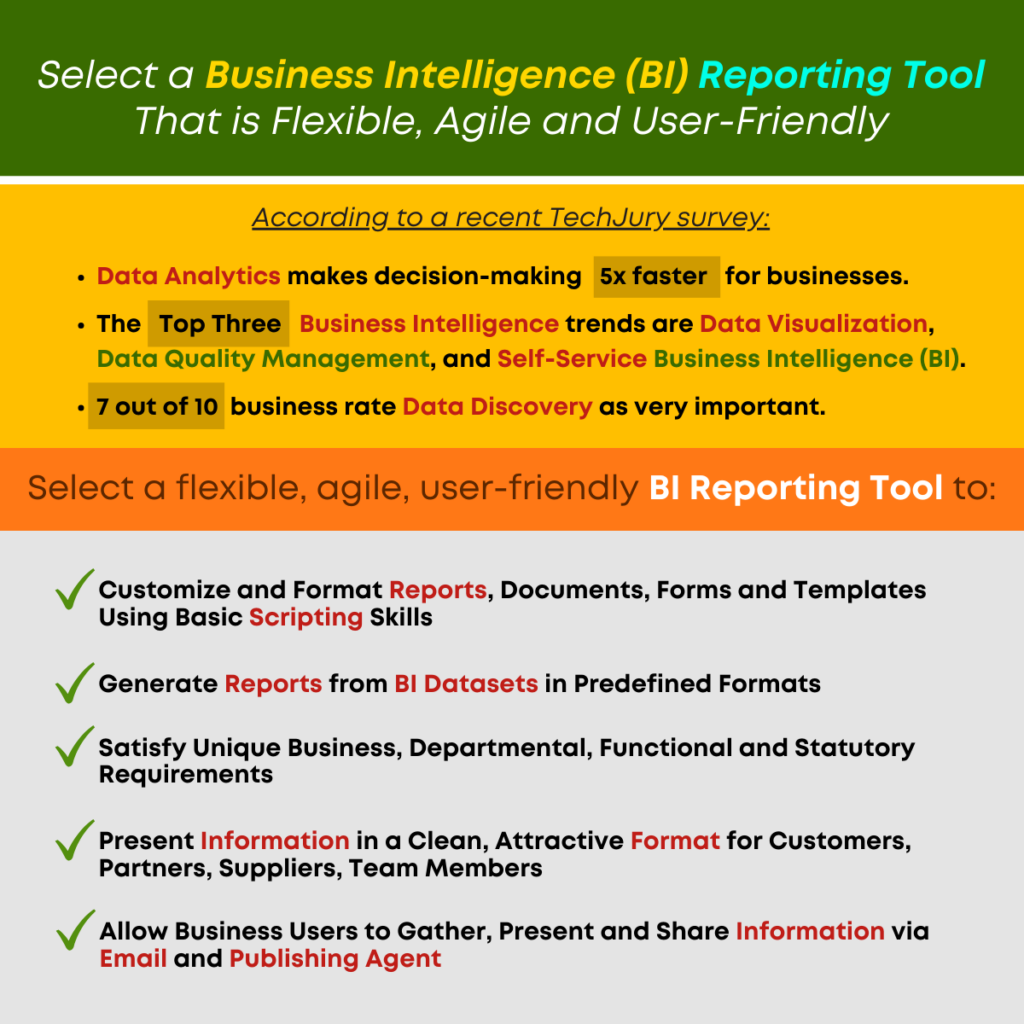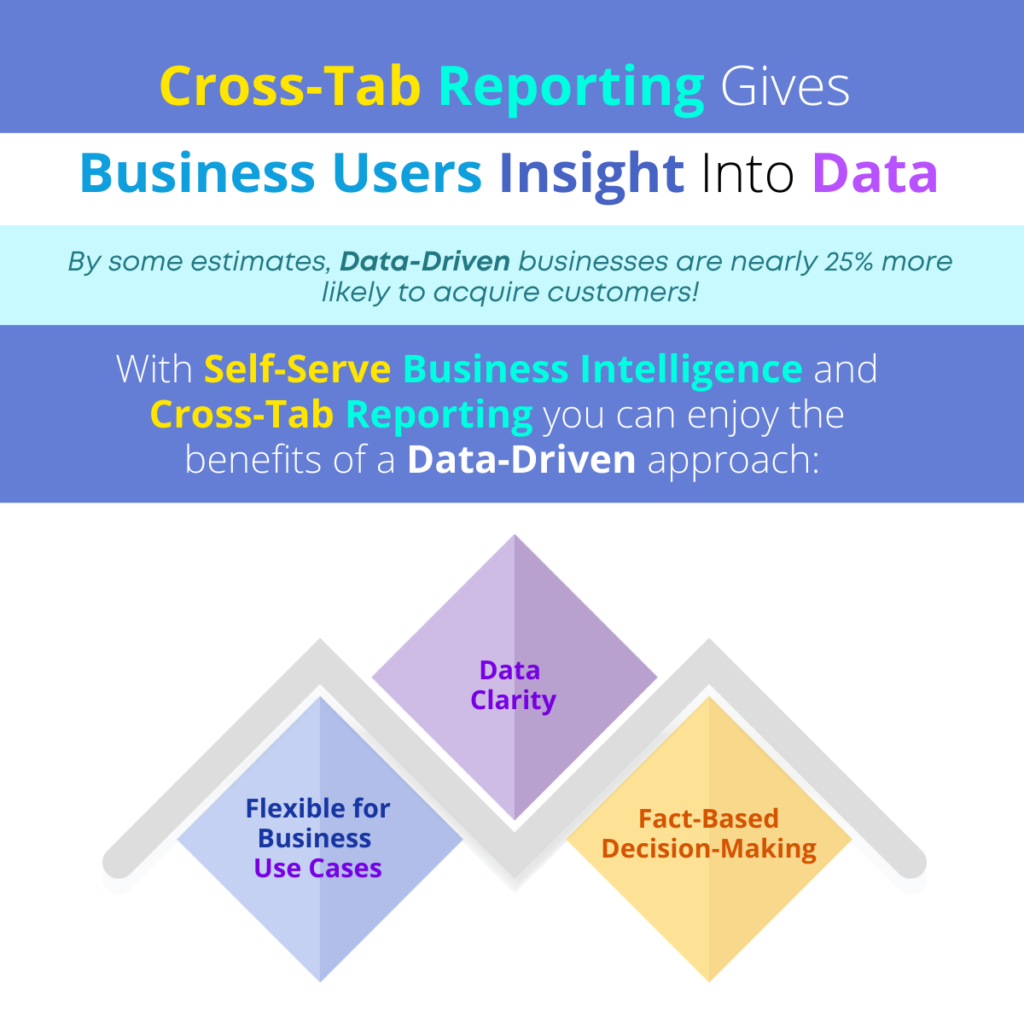Choose a BI Reporting Tool that Tells You What You Need to Know!
The ideal business intelligence and analytics solution includes traditional BI features, modern BI and analytics components and a full suite of reporting capabilities that are easy for your team to use, and will produce clear, concise results for fact-based decision-making.
According to a recent TechJury survey:
- Data analytics makes decision-making 5x faster for businesses.
- The top three business intelligence trends are data visualization, data quality management, and self-service business intelligence (BI).
- 7 out of 10 business rate data discovery as very important.
‘A BI reporting tool that enables users to customize their view and approach and is easy to understand and use will make the user more productive and ensure Return on Investment (ROI).’
If you are considering a Business Intelligence or Augmented Analytics solution, be sure to select a software suite that provides your business users with personalized dashboards, multidimensional key performance indicators, and KPI tools, report software, Crosstab and Tabular reports, GeoMaps and deep dive analytics with 100% browser based interface and self-serve features that encourage and support Social BI and collaboration.

By providing your team access to flexible, agile reporting tools, you increase the probability of user adoption, and improve the outcome, with reports and results that are meaningful to the user, and to the target audience of a presentation or distributed report.
Every business has unique reporting and documentation needs. Whether you are a business user or an analyst or IT professional, you use augmented analytics and BI tools in a way that is meaningful to your role. Gathering, preparing and analyzing is important but the final step in this process is equally important and that task often frustrates the user more than anything. Excel, cross-tab and tabular reporting are helpful, but those report and documentation options typically present data in columns and rows. A BI reporting tool that enables users to customize their view and approach and is easy to understand and use will make the user more productive and ensure Return on Investment (ROI).
Consider a Business Intelligence reporting tool that enables report, template and document design and configuration and supports preprinted fixed formats too. IT team members or consultants can leverage a simple, basic programming or scripting environment to define format templates and use data from Datasets and objects to produce stunning pixel perfect reports. Users can preview reports, export data to PDF files and share documents and reports via email at predefined frequency using delivery and publishing agents.
Benefits of Agile, Flexible Business Intelligence Reporting
- Customize and Format Reports, Documents, Forms and Templates Using Basic Scripting Skills
- Generate Reports from BI Datasets in Predefined Formats
- Satisfy Unique Business, Departmental, Functional and Statutory Requirements
- Present Information in a Clean, Attractive Format for Customers, Partners, Suppliers, Team Members
- Allows Business Users to Gather, Present and Share Information via Email and Publishing Agent
‘If you are considering a Business Intelligence or Augmented Analytics solution, be sure to select a software suite that provides your business users with personalized dashboards, multidimensional key performance indicators, and KPI tools, report software, Crosstab and Tabular reports, GeoMaps and deep dive analytics.’
For out-of-the-box reporting and flexible, interactive formats, explore our full suite of reporting tools: Pixel Perfect Print Reports, Business Intelligence Reporting. If your organization is looking for BI Tools and Augmented Analytics that leverage advanced techniques to keep pace with changing enterprise needs and support business agility, let us help you realize your business goals and objectives with fact-based information, and flexible, scalable technology solutions that will support Citizen Data Scientist initiatives, and improved data literacy and data democratization.
Original Post : BI Reporting Tools Can Make or Break Decision-Making!









